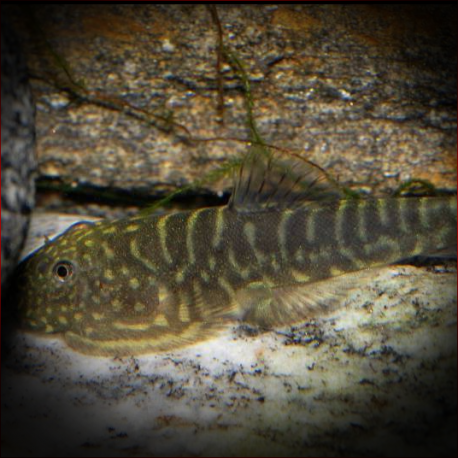More info
Datasheet
| Minimum Tank Size | 90 litres / 23.78 US gallons |
| Maximum Size | 6.1cm / 2.40inches |
| Temperature | 20°C / 68.00°F - 24°C / 75.20°F |
| Hardness | 1.01dgH / 18ppm - 12.05dgH / 215ppm |
| pH | 6.0-7.5 |
General Description
Gastromyzon Zebrinus is a small, peaceful loach commonly found in mixed shipments with other related species. It can be identified by its black body with thin, cream bars on the dorsal surface and a unique barred color pattern.
Aquarium Setup
For Gastromyzon Zebrinus, it is crucial to maintain a clean and well-oxygenated environment with a 90-liter tank or larger. The setup should include gravel or sand substrate, water-worn rocks, pebbles, and aged driftwood. Utilizing strong lighting to promote algae growth is recommended, along with the presence of aquatic plants such as Microsorum and Anubias spp. to enhance the habitat.
Behaviour
Gastromyzon Zebrinus displays peaceful behavior but can be territorial to some extent. They tend to cling to solid surfaces using their specialized morphology, making them well-adapted for life in fast-flowing water. When housed with suitable tankmates like small cyprinids and stream-dwelling gobies, they exhibit interesting territorial and feeding behaviors.
Feeding and Diet
In their natural habitat, Gastromyzon Zebrinus primarily feeds on benthic algae and microorganisms. In captivity, they accept a diet of high-quality dried foods, meaty items like bloodworms, and homemade foods rich in vegetables and Spirulina. A mature aquarium with ample algae-covered surfaces is essential for their long-term health.
Reproduction & Dimorphism
Breeding Gastromyzon Zebrinus in aquariums is challenging and rarely observed. Successful breeding attempts involved maintaining specific tank conditions to induce spawning and provide adequate care for the fry. Adult females are heavier-bodied and slightly larger than males, with noticeable differences in size and body shape.
Habitat and Distribution
Endemic to Borneo, Gastromyzon Zebrinus is specifically found in the upper Sambas River in West Kalimantan province, Indonesia. They inhabit swift, shallow streams with oxygen-rich water, gravel, rocks, and boulders covered in algae biofilm. These loaches prefer partially or fully shaded areas near cascades and waterfalls, positioning themselves to face the water flow for foraging.

